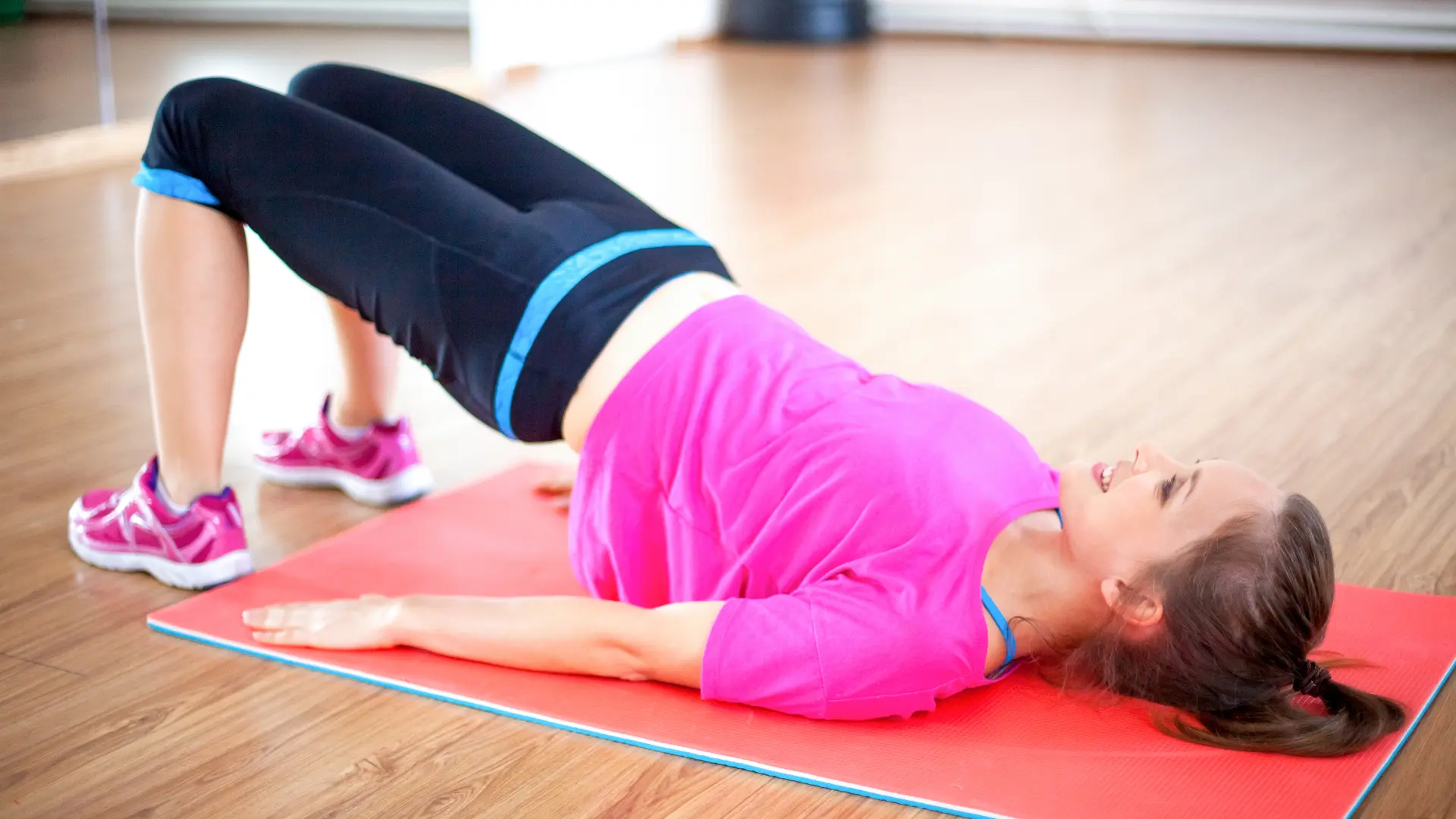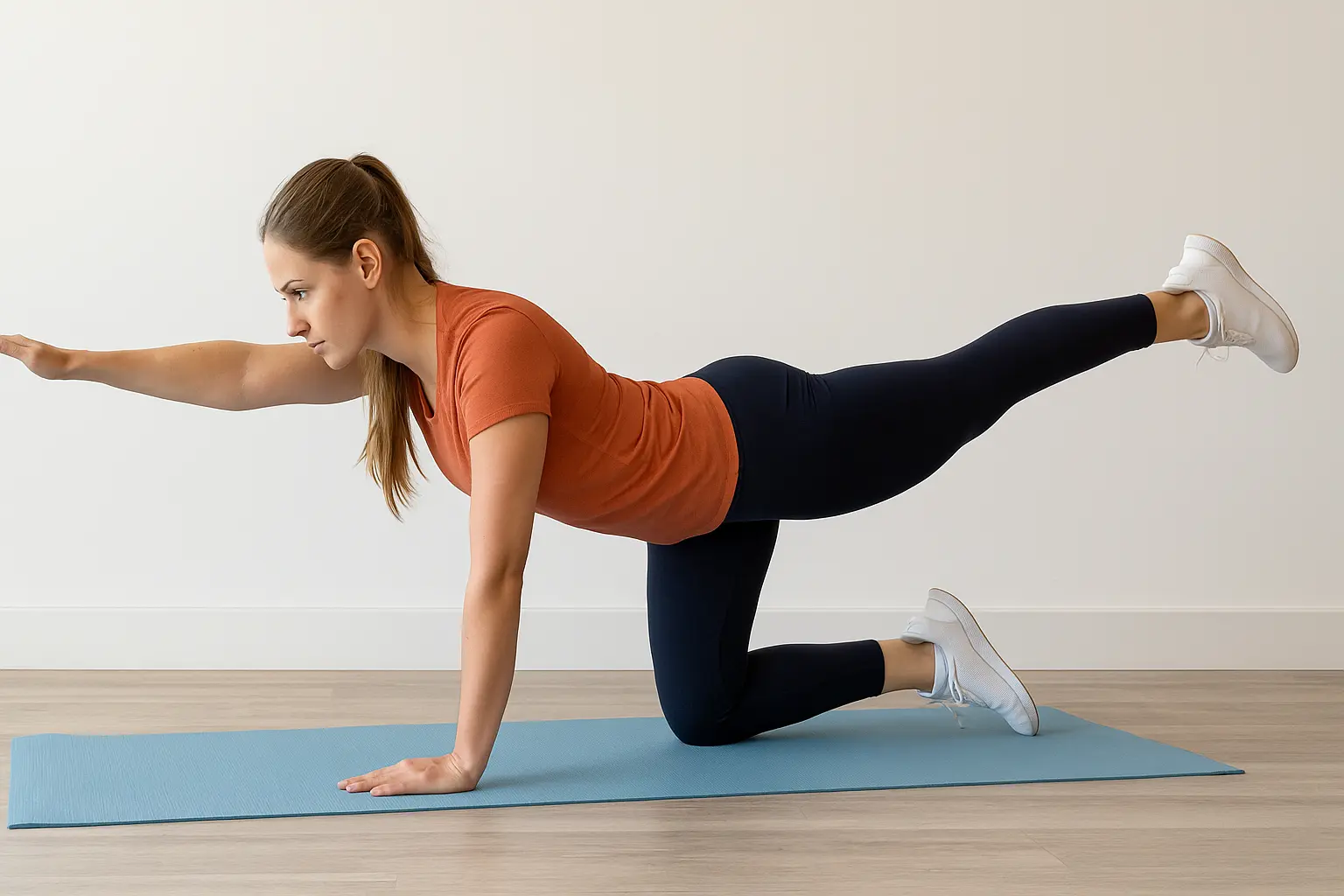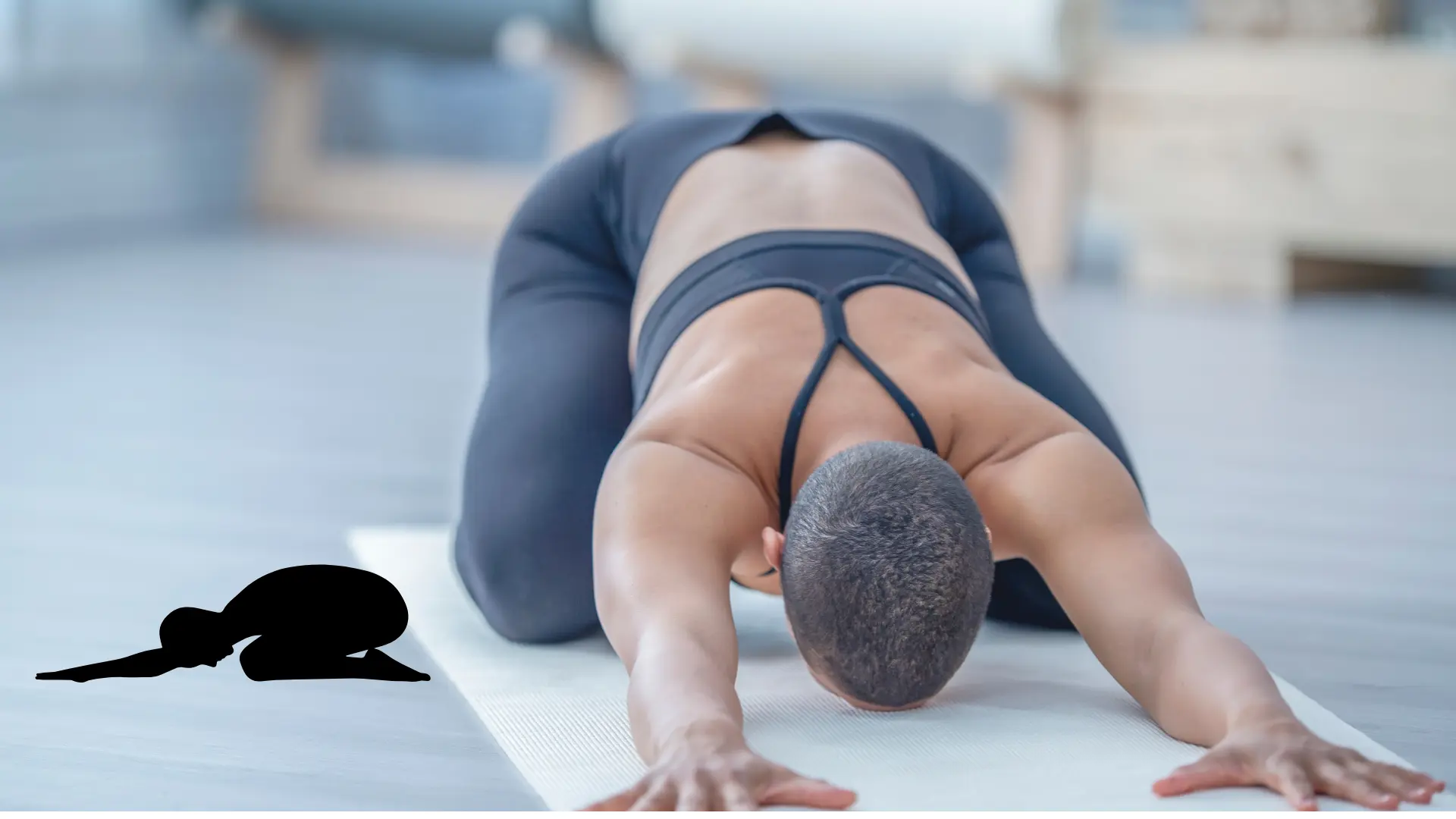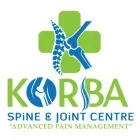You wake up stiff, sit at your desk for hours, and by evening, your lower back feels like it’s carrying the weight of the world. If that sounds familiar, you’re not alone. Low back pain is one of the leading causes of missed workdays and limited activity in the US, affecting millions of adults every year.
The good news? You don’t always need painkillers or expensive devices. The right low back pain exercise routine can reduce stiffness, build strength, and prevent flare-ups.
In this guide, I’ll walk you through 7 low back pain exercises physical therapists swear by — from gentle daily moves to rehab-focused techniques. You’ll also learn how to build a safe routine, what to avoid, and when to seek help.

Table of Contents
7 Low Back Pain Exercises Physical Therapists Swear By
1. Cat-Cow Stretch (Mobility Reset)
- Purpose: Improves spinal flexibility and warms up back muscles.
- How to Do:
- Start on hands and knees.
- Inhale as you arch your back (cow).
- Exhale as you round your spine (cat).
- Repeat 8–10 times.
- Tip: Move slowly, match breath with motion.
- Best For: Morning stiffness or long sitting relief.
2. Pelvic Tilts (Core Awakener)

- Purpose: Re-educates deep core stabilizers.
- How to Do:
- Lie on your back, knees bent, feet flat
- .Flatten your lower back gently into the floor.
- Hold 5 seconds, relax.
- Repeat 10–15 times.
- Tip: Small movement, don’t push ribs too hard.
- Best For: Beginners easing back into movement.
3. Bridge Exercise (Glute Powerhouse)

- Purpose: Strengthens glutes and hamstrings to offload the spine.
- How to Do:
- Lie on your back, knees bent.
- Press through heels, lift hips until shoulders–hips–knees align.
- Hold 3–5 seconds, lower down.
- Do 8–12 reps.
- Tip: Avoid arching lower back — lift with glutes, not spine.
- Best For: Desk workers with weak glutes.
4. Bird-Dog (Stability Trainer)

- Purpose: Builds cross-body stability, trains spine to resist twisting.
- How to Do:
- On hands and knees, extend right arm + left leg.
- Hold 5 seconds, return.
- Alternate sides, 8–10 reps each.
- Tip: Keep hips level, don’t let belly sag.
- Best For: Core endurance and balance.
5. Child’s Pose Stretch (Spinal Decompressor)

- Purpose: Gently lengthens spine, relaxes back muscles.
- How to Do:
- Kneel, sit back onto heels.
- Reach arms forward, chest toward floor.
- Hold 20–30 seconds, breathe deeply.
- Tip: Place pillow under hips if knees are tight.
- Best For: Evening relaxation and tension relief.
6. McKenzie Prone Press-Ups (Disc Relief Move)
- Purpose: Often reduces pain from disc bulge/herniation.
- How to Do:
- Lie face down, elbows under shoulders.
- Gently press chest up while hips stay down.
- Hold 5 seconds, repeat 8–10 times.
- Tip: Stop if pain worsens or radiates down the leg.
- Best For: Leg pain from disc-related issues.
7. Knee-to-Chest Stretch (Flexion Release)
- Purpose: Relieves tension in lower back muscles.
- How to Do:
- Lie on back, pull one knee toward chest.
- Hold 20 seconds, switch sides.
- Do 3–4 times each.
- Tip: Keep opposite leg bent for comfort.
- Best For: Post-walk or workout cool down.
Quick Comparison Table
| Exercise | Type | Best For | Caution |
|---|---|---|---|
| Cat-Cow | Mobility | Morning stiffness | Move slowly |
| Pelvic Tilt | Core stability | Beginners | Avoid arching |
| Bridge | Strength | Weak glutes | Don’t over-arch |
| Bird-Dog | Stability | Core & balance | Keep hips level |
| Child’s Pose | Stretch | Relaxation | Modify for knees |
| McKenzie Press-Up | Extension | Disc bulge relief | Stop if pain worsens |
| Knee-to-Chest | Stretch | Muscle tightness | Gentle only |
Safety Notes from Physical Therapists
- If pain shoots down the leg, causes numbness, or worsens, stop immediately.
- Avoid holding your breath — oxygen helps muscles relax.
- Start small — consistency beats intensity.
- If you have osteoporosis, recent surgery, or severe arthritis, consult your doctor first.
How to Build a Daily Low Back Pain Exercise Routine
- Warm-up: Cat-Cow (2 min)
- Core & Glute Activation: Pelvic Tilt + Bridge (5 min)
- Stability: Bird-Dog (3 min)
- Relief Stretch: Child’s Pose + Knee-to-Chest (3 min)
- If Disc-related Pain: McKenzie Press-Ups (optional, 2 min)
👉 Total time: ~15 minutes
Do this 4–5 days per week, and most people notice meaningful improvement within 4–6 weeks.
Prevention Stack for Long-Term Relief
- Sit less, move more – stand every 30–40 minutes.
- Walk daily – even 10 minutes counts.
- Strengthen hips and core – squats, planks, glute work.
- Prioritize sleep – poor sleep amplifies pain sensitivity.
- Manage stress – mindfulness, breathing, or gentle yoga.
According to the CDC, nearly one-quarter of adults in the US report ongoing low back pain. Prevention strategies like walking, core strengthening, and better sleep hygiene are among the most effective ways to reduce recurrence.
Conclusion
Low back pain isn’t just about discomfort — it’s about how your spine moves, rests, and adapts to stress. By adding these 7 low back pain exercises physical therapists swear by, you give your back the tools it needs to heal, get stronger, and stay resilient.
Movement is medicine. Start today, keep it gentle, and stay consistent — your future spine will thank you.
Frequently Asked Questions
What is the best low back pain exercise?
No single exercise works for everyone. Bridges and bird-dog are most often recommended because they strengthen without overloading the spine.
Can I do low back pain exercises daily?
Yes, most gentle mobility and core exercises can be done daily. Listen to your body and scale back if soreness lingers more than 24 hours.
Are McKenzie exercises safe for all back pain?
No. They’re helpful for disc-related pain but may worsen arthritis or stenosis. Always test gently and consult a physical therapist if unsure.
How long before I see results from low back pain exercises?
Most people notice some relief in 2–3 weeks with consistent practice, but lasting changes often take 6–8 weeks.
Should I stretch or strengthen for low back pain?
Both. Stretching reduces stiffness while strengthening builds resilience against future flare-ups.
Can walking count as low back pain exercise?
Absolutely. Walking promotes circulation, reduces stiffness, and engages stabilizing muscles. Aim for 20–30 minutes most days.
Which exercises should I avoid with low back pain?
Deep forward bends, heavy twisting sit-ups, and high-impact moves (like jumping jacks) may aggravate pain.
Do I need equipment for these exercises?
No. All 7 can be done with just body weight and a mat.
When should I stop exercising and see a doctor?
If pain radiates below the knee, causes weakness, or disrupts sleep, seek medical help.
Are these exercises safe for seniors?
Yes, with modifications. Seniors should focus on gentle stretches, pelvic tilts, and walking to maintain mobility and balance.
Suggested Reading
- 10 Most Common Low Back Pain Symptoms Doctors Want You to Know
- Doctor Explains What Causes Lower Back Pain and How to Prevent and Reset It

Dr. Vivek Arora (BPT, MPT, FRCPT, MIAP) is a licensed physiotherapist with over 20 years of experience in spine and joint care. He specializes in evidence-based physiotherapy, patient education, and long-term recovery without surgery. Passionate about empowering patients through knowledge, Dr. Arora shares expert-backed health content for a global audience.
To know more about Dr. Vivek’s journey, click here.
